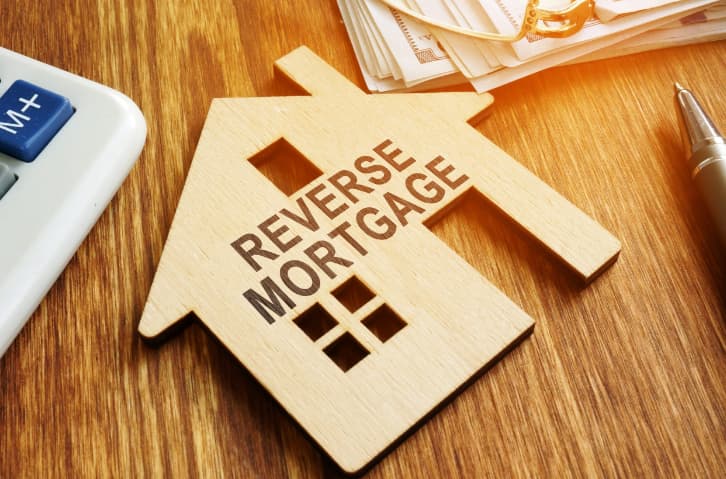Rights and Responsibilities of a Reverse Mortgage It is a type of mortgage that is usually secured by the use of a residential property. This type of loan allows the borrower to access the unencumbered value of the property. These loans are usually granted to senior citizens who own their homes.
They do not require monthly mortgage payments. Borrowers remain responsible for property taxes and home insurance. Mortgages allow seniors to obtain a loan equal to the current market value of their home, deferring the repayment of that loan until their death, sale, or move out.
Reverse mortgage rights and responsibilities

A reverse mortgage cannot be done backward. Local Home Loan Mortgage Insurance costs up to 2% of the assessed home value and is a one-time payment, and there is also an annual fee equal to 0.5% of the outstanding loan balance.
Implementation of the specific rules for reverse mortgage deals varies based on each country’s regulations; As a rule, in Canada, debts owed are prohibited from exceeding the fair market value of the property under the scheme.
Anyone can make a comprehensive comparison of the reverse and traditional mortgage, by making the property owner pay a monthly amount to the borrower, and after each monthly payment, the market value of the house is increased, but what are the most important rights and responsibilities of a reverse mortgage? This will be answered in the following paragraphs.
Mortgage Research
Regulators and academics have given mixed comments about the rights and responsibilities of a reverse mortgage. Some economists argue that reverse mortgages can be beneficial for seniors by controlling their incomes and consumption over time.
Despite this, regulators such as the Consumer Financial Protection Bureau consider reverse mortgages to be “complicated products that are difficult for consumers to understand”, especially given “disinformation”, low-quality advice, and “the possibility of fraud and other deception”.
The bureau also notes that many consumers do not benefit from using reverse mortgages for positive purposes, which are the purposes that economists recommend to achieve rationalization of consumption, and therefore, a borrower in Canada should consult independent legal counsel before agreeing to the use of a reverse mortgage.
Conditions for obtaining a reverse mortgage
People who want to obtain a reverse mortgage must seek advice from an expert who is certified in the field of reverse mortgage before applying, and those who wish to practice any kind of credit activities such as lessors, brokers, and lenders; To obtain a license from the Office of the Australian Investment and Securities Commission.
or be the representative of a person holding a license (ie having a license or supervising another person holding the license, as a fiduciary representative or authorized officer) (the Australian Securities and Investments Commission).
Qualification requirements vary according to the lender, here we will explain the conditions required to obtain a reverse mortgage with the rights and responsibilities of a reverse mortgage:
- The borrower must be over 60 or 65 years old; In the case of a buyer, there are real estate guarantees, and the younger borrower must meet the age qualifications.
- The borrower must own real estate, or must have such a low mortgage balance that the debt will be canceled using the proceeds of the reverse mortgage; Thus the reverse mortgage remains the only security for the property.
Loan size and cost

A reverse mortgage can be up to 50% of the value of the property, and the amount available for the loan is determined by several factors including the rights and responsibilities of the reverse mortgagee:
- The older the borrowers, the more money they borrow.
- current interest rates.
- The value of the property.
- The location of the property.
- The minimum and maximum amount of the program can ideally range from $10,000 as the minimum amount allowed, to between $250,000 and $1,000,000 as a maximum depending on the loan provider.
Fees for obtaining mortgage loans
Due to the difference in the exclusive reverse mortgage program being taken out, the cost of obtaining a reverse mortgage varies depending on the rights and responsibilities of the reverse mortgagee. These costs are usually transferred to the loan itself and bundled with the principal. Traditional costs of a reverse mortgage include the following :
- The registration fee (incorporation fee) ranges from $0 to $950.
- Stamp duty, mortgage registration fee and other government fees = vary by location.
Mortgage interest rates face a great difference and diversity,
as some programs offer loans with fixed interest and others are variable.
In addition, a reverse mortgage may incur some costs.
A monthly service fee is applied to the loan balance (eg $12 per month),
which is compounded with the principal amount.
The best products are those that do not include a monthly fee.
When considering a reverse mortgage, you should be aware that there are no monthly fees
and lower interest, if you are required to pay a monthly fee by your bank.
Reverse mortgage proceeds
Money owed from a reverse repossession of a property can be divided into several styles
- A lump sum is deducted in cash upon settlement.
- Pay the property as a monthly cash payment.
- A home market value line of credit is similar to a line of credit.
- A combination of the above.
Mortgage procedures
To obtain a home mortgage loan, you can follow the steps and submit the following required documents according to the rights and responsibilities of the reverse mortgage:
- Prepare all mortgage requirements with the bank.
- The bank employee must enter all required documents and papers through the electronic mortgage system.
- Auditing of the transaction by the bank auditor.
- After the transaction is sent to the Land Department for examination, the department fee is deducted from the linked bank account.
- The department employee issues the reverse mortgage sticker and certificate.
- Contact the customer and ask him to come to the bank branch to receive the matters.
Read more: Reverse mortgage and its most important types and features
The difference between mortgage and real estate financing

Mortgage refers to the classification of loans obtained to finance the purchase of real estate. Many people wonder if the concepts of mortgage and real estate financing are similar.
Ambiguity may sometimes lead to wrong financial decisions. Therefore,
below we will provide an overview of both to help you distinguish between each type of real estate loan and the features of each of them, as follows:
- If the borrower owns real estate but faces a shortage of funds and wants to obtain money,
he resorts to a mortgage as a means to facilitate his financial affairs,
provided that he mortgages the property he owns with the financing institution. - When it comes to real estate financing, the borrower does not have the necessary funds
or property and seeks to borrow to purchase a particular property.
So, the mortgage is that it provides all customers with a great ability to borrow money from the financier in exchange for mortgaging their real estate, and the period for repaying the loan value is determined according to variable or fixed interest rates.
This is according to what suits the customer and his needs, as for real estate financing,
but real estate financing is defined as one of the types of financial loans that are unique
to financing companies and financial banks to help individuals buy a specific property.
At the end of the article, we have provided you with the most important details of the rights
and responsibilities of a reverse mortgage,
as well as the simplest procedures for obtaining a mortgage loan.

